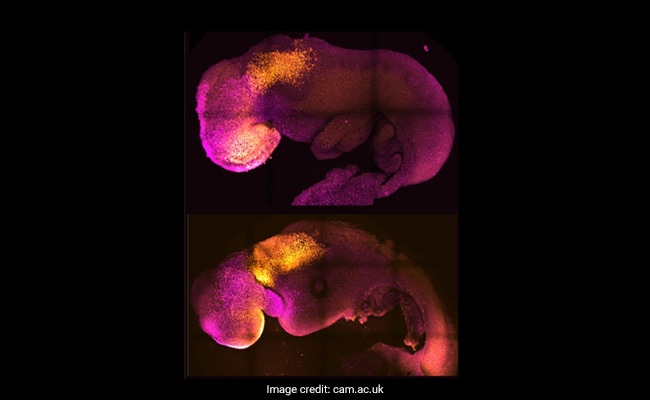[ad_1]

The embryo has a brain, a beating heart, and the building blocks for every other organ in the body.
Scientists from the University of Cambridge have created world’s first “synthetic” embryo that has a brain, a beating heart, and the building blocks for every other organ in the body, said a report from New York Post. The embryo has been created from mouse stem cells, the outlet further said.
According to a release from the university, instead of using eggs or sperm, a team lead by Professor Magdalena Zernicka-Goetz created the embryo model using stem cells, which are the body’s stem cells and can differentiate into nearly any type of cell.
Ms Zernicka-Goetz is a professor in Mammalian Development and Stem Cell Biology in Cambridge’s Department of Physiology, Development and Neuroscience.
The three different stem cell types that are present in early mammalian development were brought to the stage where they begin interacting, imitating natural processes in the laboratory.
The researchers were able to persuade the stem cells to “talk” to each other by triggering the production of a certain set of genes and creating a special environment for their interactions, the release further said.
“Our mouse embryo model not only develops a brain, but also a beating heart, all the components that go on to make up the body,” the researcher is quoted as saying in the release.
“It’s just unbelievable that we’ve got this far. This has been the dream of our community for years, and major focus of our work for a decade and finally we’ve done it,” she added.
In order to understand why some pregnancies fail and others succeed, Professor Zernicka-Goetz’s team at Cambridge University has been researching these first phases of pregnancy over the past decade.
“The stem cell embryo model is important because it gives us accessibility to the developing structure at a stage that is normally hidden from us due to the implantation of the tiny embryo into the mother’s womb,” Ms Zernicka-Goetz further said.
The scientists discovered that the extraembryonic cells communicate with the embryonic cells not only chemically but also mechanically, or by touch, in order to direct the embryo’s development.
[ad_2]
Source link
